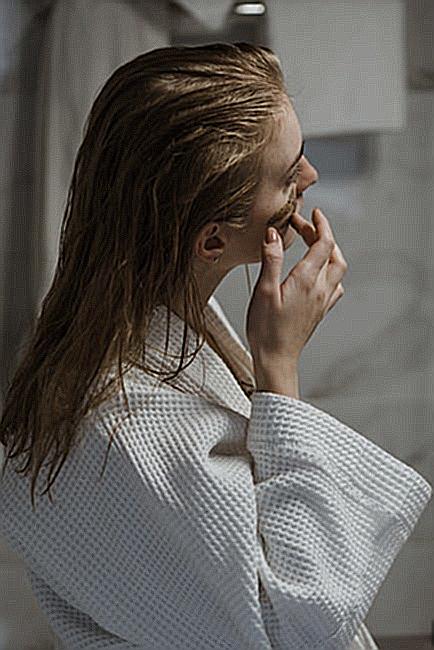Olopatadine eye drops are a medication used to treat various eye allergies such as conjunctivitis, seasonal allergic rhinitis, and hay fever. These eye drops provide quick relief by blocking the release of histamine, a substance that causes inflammation and itching in the eyes.
Olopatadine eye drops work by inhibiting the production and release of histamine, which is responsible for causing allergic reactions in the eye. This medication is suitable for both seasonal and year-round allergies and can be used by both adults and children over the age of 3. It is typically prescribed by an eye doctor or a general practitioner and is available in several different concentrations depending on the severity of the allergy.
The active ingredient in Olopatadine eye drops is called Olopatadine hydrochloride, which is a type of antihistamine that works by blocking the histamine receptors in the eye. This results in less itching, redness, and swelling in the eye, allowing for clear, healthy vision. Olopatadine eye drops also have a long-lasting effect, so it does not need to be applied several times throughout the day.
Overall, Olopatadine eye drops are a highly effective medication for treating eye allergies. It is safe, easy to use, and provides fast relief from symptoms. People who suffer from eye allergies can discuss with their doctor about whether Olopatadine eye drops are right for them.
What Are Olopatadine Eye Drops Used For?
Olopatadine eye drops are a type of medication used to relieve the symptoms of seasonal allergic conjunctivitis (SAC) and perennial allergic conjunctivitis (PAC). These conditions are caused by an allergic response to common allergens such as pollen, dust, and pet dander. Symptoms include itchy, red, watery eyes, and swelling around the eyes. Olopatadine eye drops work by blocking the release of histamine, which is responsible for the allergic symptoms.
How Long Do Olopatadine Eye Drops Take To Work?
Olopatadine eye drops usually start to work within 15 minutes of being applied. However, it may take up to several days of regular use before the full benefits of the medication are realized. It is important to continue using the drops as directed by your healthcare provider, even if you do not see immediate improvement in your symptoms.
What Are The Side Effects Of Olopatadine Eye Drops?
Common side effects of olopatadine eye drops include stinging, burning, or itching of the eyes, blurred vision, dry eyes, and redness of the eyes. These side effects usually go away on their own within a few minutes after application. Less common, but more serious side effects may include eye irritation, eye pain, and vision changes. If you experience any of these symptoms, you should contact your healthcare provider right away.
How Often Should I Use Olopatadine Eye Drops?
The recommended dosing for olopatadine eye drops is usually one drop in each affected eye twice a day, approximately 6 to 8 hours apart. Your healthcare provider may adjust your dosing schedule based on your individual needs or the severity of your symptoms. It is important to follow the dosing instructions provided by your healthcare provider and not to exceed the recommended dose.
Can I Use Olopatadine Eye Drops While Wearing Contact Lenses?

Yes, olopatadine eye drops can be used while wearing contact lenses. However, it is recommended that you wait at least 10 minutes after applying the drops before inserting your contact lenses. This will help to ensure that the drops have had sufficient time to be absorbed by your eyes and will prevent any potential interactions with your contact lenses.
What Is The Difference Between Olopatadine Eye Drops And Pataday?
Olopatadine eye drops and Pataday are both medications used to treat allergic conjunctivitis. The primary difference between the two is the concentration of the active ingredient, olopatadine. Olopatadine eye drops contain 0.1% olopatadine, while Pataday contains a higher concentration of 0.2% olopatadine. Pataday is typically used to treat more severe symptoms of allergic conjunctivitis.
Are Olopatadine Eye Drops An Antihistamine?
Yes, olopatadine eye drops are considered to be antihistamines. They work by blocking the release of histamine, which is a chemical that is released in response to an allergic reaction. By blocking the release of histamine, olopatadine eye drops help to relieve the symptoms of allergic conjunctivitis.
Can I Use Olopatadine Eye Drops For Pink Eye?
Olopatadine eye drops are not recommended for the treatment of pink eye, also known as conjunctivitis. Pink eye can be caused by bacterial, viral, or allergic factors, and requires different treatment depending on the underlying cause. Olopatadine eye drops are only effective for treating allergic conjunctivitis caused by an allergic response.
What Should I Do If I Miss A Dose Of Olopatadine Eye Drops?
If you miss a dose of olopatadine eye drops, you should take it as soon as you remember. However, if it is close to the time of your next scheduled dose, you should skip the missed dose and continue with your regular dosing schedule. Do not double up on doses to make up for a missed dose.
How Should I Store Olopatadine Eye Drops?
Olopatadine eye drops should be stored at room temperature, between 68 and 77 degrees Fahrenheit (20 and 25 degrees Celsius). They should be kept in their original container with the cap tightly closed to prevent contamination. Do not store olopatadine eye drops in the bathroom or near any sources of heat or moisture.
How Long Do Olopatadine Eye Drops Last Once Opened?
Once opened, olopatadine eye drops should be discarded after 4 weeks. This is because the preservative in the drops can break down over time, which can increase the risk of infection. To ensure the safety and effectiveness of the drops, it is important to follow the expiration date and discard any unused drops after 4 weeks, even if there is still medication remaining in the bottle.
Conclusion
Olopatadine eye drops have been widely used to treat seasonal and perennial allergic conjunctivitis, a common eye condition that can lead to discomfort, itching, redness, and swelling in the eyes. Although there are various treatment options for allergic conjunctivitis, olopatadine eye drops have shown to be effective in reducing the symptoms and improving the quality of life for patients.

Clinical studies have established the safety and efficacy of olopatadine eye drops in relieving the signs and symptoms of allergic conjunctivitis. The medication is well-tolerated, and side effects are generally mild, with the most common being a bitter taste in the mouth or slight irritation immediately after administration.

Olopatadine eye drops work by inhibiting the release of histamine and other inflammatory mediators in the eye, thereby reducing inflammation and swelling. This targeted approach has made olopatadine eye drops a preferred choice for many eye doctors and patients with allergic conjunctivitis.
In conclusion, olopatadine eye drops have proven to be a safe and effective treatment for allergic conjunctivitis. If you are experiencing symptoms of allergic conjunctivitis, it is vital to talk to your eye doctor, who can best determine if olopatadine eye drops are appropriate and safe for you.
"}},{"@type": "Question", "name": "How Long Do Olopatadine Eye Drops Take To Work?","acceptedAnswer": {"@type": "Answer","text": "Olopatadine eye drops usually start to work within 15 minutes of being applied. However, it may take up to several days of regular use before the full benefits of the medication are realized. It is important to continue using the drops as directed by your healthcare provider, even if you do not see immediate improvement in your symptoms.
"}},{"@type": "Question", "name": "What Are The Side Effects Of Olopatadine Eye Drops?","acceptedAnswer": {"@type": "Answer","text": "
Common side effects of olopatadine eye drops include stinging, burning, or itching of the eyes, blurred vision, dry eyes, and redness of the eyes. These side effects usually go away on their own within a few minutes after application. Less common, but more serious side effects may include eye irritation, eye pain, and vision changes. If you experience any of these symptoms, you should contact your healthcare provider right away.
"}},{"@type": "Question", "name": "How Often Should I Use Olopatadine Eye Drops?","acceptedAnswer": {"@type": "Answer","text": "
The recommended dosing for olopatadine eye drops is usually one drop in each affected eye twice a day, approximately 6 to 8 hours apart. Your healthcare provider may adjust your dosing schedule based on your individual needs or the severity of your symptoms. It is important to follow the dosing instructions provided by your healthcare provider and not to exceed the recommended dose.
"}},{"@type": "Question", "name": "Can I Use Olopatadine Eye Drops While Wearing Contact Lenses?","acceptedAnswer": {"@type": "Answer","text": "
Yes, olopatadine eye drops can be used while wearing contact lenses. However, it is recommended that you wait at least 10 minutes after applying the drops before inserting your contact lenses. This will help to ensure that the drops have had sufficient time to be absorbed by your eyes and will prevent any potential interactions with your contact lenses.
"}},{"@type": "Question", "name": "What Is The Difference Between Olopatadine Eye Drops And Pataday?","acceptedAnswer": {"@type": "Answer","text": "Olopatadine eye drops and Pataday are both medications used to treat allergic conjunctivitis. The primary difference between the two is the concentration of the active ingredient, olopatadine. Olopatadine eye drops contain 0.1% olopatadine, while Pataday contains a higher concentration of 0.2% olopatadine. Pataday is typically used to treat more severe symptoms of allergic conjunctivitis.
"}},{"@type": "Question", "name": "Are Olopatadine Eye Drops An Antihistamine?","acceptedAnswer": {"@type": "Answer","text": "Yes, olopatadine eye drops are considered to be antihistamines. They work by blocking the release of histamine, which is a chemical that is released in response to an allergic reaction. By blocking the release of histamine, olopatadine eye drops help to relieve the symptoms of allergic conjunctivitis.
"}},{"@type": "Question", "name": "Can I Use Olopatadine Eye Drops For Pink Eye?","acceptedAnswer": {"@type": "Answer","text": "Olopatadine eye drops are not recommended for the treatment of pink eye, also known as conjunctivitis. Pink eye can be caused by bacterial, viral, or allergic factors, and requires different treatment depending on the underlying cause. Olopatadine eye drops are only effective for treating allergic conjunctivitis caused by an allergic response.
"}},{"@type": "Question", "name": "What Should I Do If I Miss A Dose Of Olopatadine Eye Drops?","acceptedAnswer": {"@type": "Answer","text": "If you miss a dose of olopatadine eye drops, you should take it as soon as you remember. However, if it is close to the time of your next scheduled dose, you should skip the missed dose and continue with your regular dosing schedule. Do not double up on doses to make up for a missed dose.
"}},{"@type": "Question", "name": "How Should I Store Olopatadine Eye Drops?","acceptedAnswer": {"@type": "Answer","text": "Olopatadine eye drops should be stored at room temperature, between 68 and 77 degrees Fahrenheit (20 and 25 degrees Celsius). They should be kept in their original container with the cap tightly closed to prevent contamination. Do not store olopatadine eye drops in the bathroom or near any sources of heat or moisture.
"}},{"@type": "Question", "name": "How Long Do Olopatadine Eye Drops Last Once Opened?","acceptedAnswer": {"@type": "Answer","text": "Once opened, olopatadine eye drops should be discarded after 4 weeks. This is because the preservative in the drops can break down over time, which can increase the risk of infection. To ensure the safety and effectiveness of the drops, it is important to follow the expiration date and discard any unused drops after 4 weeks, even if there is still medication remaining in the bottle.
"}},{"@type": "Question", "name": "Conclusion","acceptedAnswer": {"@type": "Answer","text": "Olopatadine eye drops have been widely used to treat seasonal and perennial allergic conjunctivitis, a common eye condition that can lead to discomfort, itching, redness, and swelling in the eyes. Although there are various treatment options for allergic conjunctivitis, olopatadine eye drops have shown to be effective in reducing the symptoms and improving the quality of life for patients.
Clinical studies have established the safety and efficacy of olopatadine eye drops in relieving the signs and symptoms of allergic conjunctivitis. The medication is well-tolerated, and side effects are generally mild, with the most common being a bitter taste in the mouth or slight irritation immediately after administration.
Olopatadine eye drops work by inhibiting the release of histamine and other inflammatory mediators in the eye, thereby reducing inflammation and swelling. This targeted approach has made olopatadine eye drops a preferred choice for many eye doctors and patients with allergic conjunctivitis.
In conclusion, olopatadine eye drops have proven to be a safe and effective treatment for allergic conjunctivitis. If you are experiencing symptoms of allergic conjunctivitis, it is vital to talk to your eye doctor, who can best determine if olopatadine eye drops are appropriate and safe for you. "}}]}



